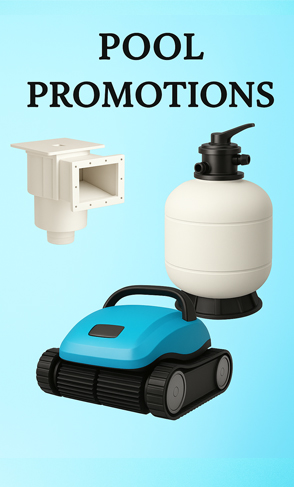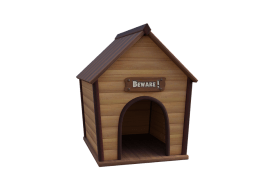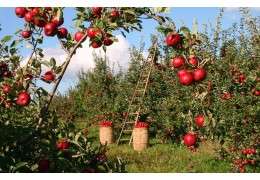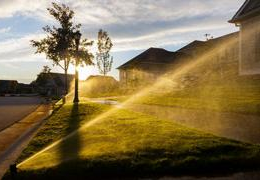How to design an organic garden
Did you know that you can produce around 2,000 kilos of crops per year on a small plot? Yes, and this is possible in a organic garden either garden orchard. Here we will present the steps from design, planning, organization, soil, composting, natural pest control and more.
In this sense, if you are looking for recommendations on how to start a garden from scratch, without depending on chemical fertilizers or pesticides, stay here, because we have a gift prepared for you.
Recommendations for designing a garden orchard
With these tips you will be successful in creating your garden:
- Soil creation
It is recommended that the soil has abundant organic matter and other garden tools. In fact, healthy soil is the foundation of successful gardening. If you have good soil, all you need to do is compost it before each growing season.
Alternatively, if soil conditions are poor, you can fertilize it with plenty of compost or manure during the first season. Alternatively, build raised beds and fill them with a good mix of soil, compost, or manure.
It's worth noting that the easiest way to create compost is simply to add kitchen scraps directly to the soil each week and let the worms do their work. Worms feed on organic matter, and worm castings are one of the best natural fertilizers.
- Garden design
A well-designed garden is easy to access, has good sunlight, and a good combination of mutually beneficial elements. The space you have available is important in determining the shape you will give your garden.
Start by identifying the entrance space and the water point, which should be positioned in such a way that it can connect to the entire water system that will serve the entire garden.
Then, lay out the walkways, the paths you'll use to move between the cultivated plots without stepping on them. There's usually one main path, to which smaller walkways connect to reach all parts of the plot.
- Build the irrigation system
Another important step is to ensure that each crop receives the amount of water it needs.
The irrigation systems available for a land are different, from the irrigation programmers modern, to the traditional drip irrigation. The right thing to do is to choose the one that best irrigation system adapts to the space and environmental needs of the garden.
On any property, it is advisable to install a rainwater collection system for periods of drought that last throughout the summer, especially in warmer regions.
- Seeds, transplanting, spacing
In this step, you can plant vegetables either by direct sowing or by transplanting. We discovered this method of growing vegetables organic seeds, which has had a favorable impact on the final harvest per season.
According to this:
· Place a piece of paper or towel in a plastic bag, add water until the paper towel is completely damp, without making a puddle.
· Next, place the seeds in clumps on a damp paper towel. Seal the bag and take note of the seeds inside, especially if you have seeds that look the same, such as broccoli, kale, and cauliflower.
· Plant the germinated seeds in pots. As soon as you see roots appear, transplant them immediately. If the roots grow too large, they will be difficult to separate from the paper towel. If this happens, simply plant them 1 to 2 seed sizes deep in a paper towel and mist gently for a week.
· As the days go by, small green leaves will appear in a couple of days. Now they need the sun to stay strong and healthy!
- Crop rotation
In a garden at home, generally organic, crop rotation is a very important element that keeps the soil always rich and fertile.
The most successfully grown garden plants belong primarily to four families: Solanaceae (tomatoes, peppers); Cucurbitaceae (squash, zucchini, cucumbers); Legumes (peas, beans); Cruciferae (broccoli, cabbage, arugula).
At the end of each harvest, you may want to consider changing the soil used to support the cultivated plants, keeping in mind that some consume more organic matter than others.
For example, tomatoes and peppers have a strong tendency to soak up as much of the soil as possible and wear it down, so you'll need to fertilize more heavily before planting other plants in their place.
- Water and fertilize the garden
Regular watering is very important for your garden to be healthy and productive. On hot days, water 2 to 3 times a week. Experts recommend installing irrigation programmers for better control
Because we add compost to the garden and remove organic matter regularly, our soil is really good and we don't use much fertilizer in the garden.
- Use a vertical layout
The vertical design can also be very attractive, offering support for vines or cucumbers.
Likewise, create your own garden at home vertically, using materials you have on hand, such as pots or trellises.
- Pest control
A garden with healthy plants, good soil, and regular watering is very resistant to pests.
However, we recommend spraying aphids with water or a solution of 1 tablespoon of dishwashing detergent per 1 liter of water. Among other things, caterpillars and whiteflies can be controlled with organic garden sprays.
- Use a greenhouse
A greenhouse can speed up the growing season by weeks and keep you productive, even during the coldest months. If you don't already have a greenhouse in your organic farming, don't worry, you can easily make it yourself.
Try building a small option from old windows, which will not only speed up the growing season, but also decorate the site.
Products needed to design a garden at home
To work well in a home garden, The right tools are essential. They make soil cultivation, crop maintenance, and planting easier.
When it comes to gardening, know-how is essential, as are the right tools. To properly clean, plant, sow, and maintain your crops, it's important to know how to use them. Below are the most suitable tools:
- Pallette
This is a must-have tool for performing several daily gardening tasks, including breaking up clods of soil, digging small holes, transplanting seedlings, and even digging up weeds.
- Pruning shears
It is one of the pruning tools most used in a urban garden. In fact, whether you're harvesting fresh produce or trimming berry bushes, you'll want to equip yourself with a sturdy set of pruning shears.
- Hose or watering can
The garden hose It's used to keep your garden or orchard hydrated. Consider installing a sprinkler attachment that allows you to control the flow and pressure of the water.
- Rake
A garden rake makes it easy to create smooth, level soil while removing unwanted weeds. If you're cultivating hard, overgrown soil, consider switching from a rake to a garden hoe.
- Angled shovel
Select an angled paddle for your home garden, This tool will give you the ability to dig holes, move soil, and relocate plants. If you're starting a large garden bed, a square garden spade will allow you to make cleaner cuts.
Other tools are:
· Forklift truck.
· Gardening gloves.
· Sprinkler.
· Kneeling pads.
The advantages of having a home garden
The advantages are obvious, whether it is a home garden like an ornamental garden. In the first case, it's very clear that everything collected in the garden will be much healthier and more beneficial for our bodies.
And in the second case, an organic ornamental garden will be environmentally friendly and will not pose any problems for small wild visitors, bees, butterflies, and other living beings that regularly frequent a flower garden.












Leave a comment